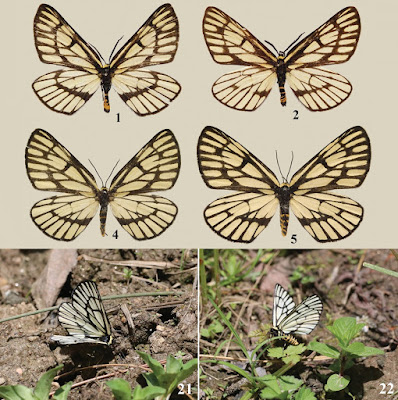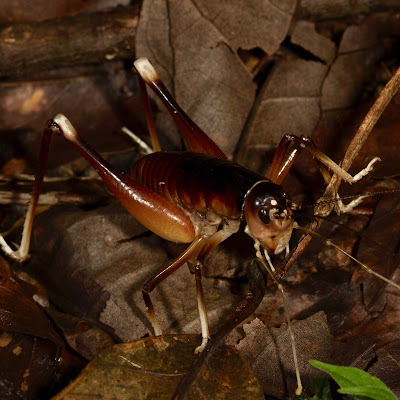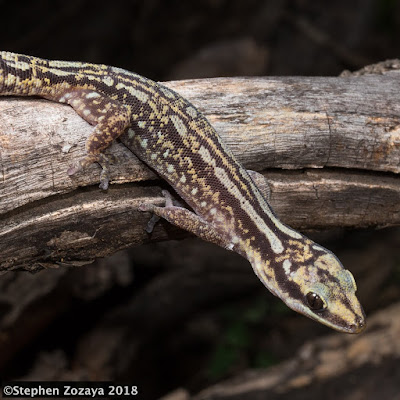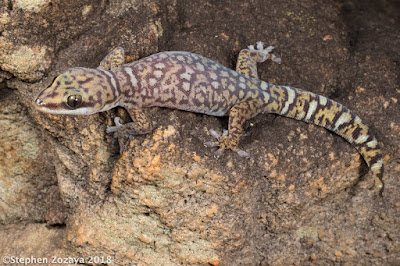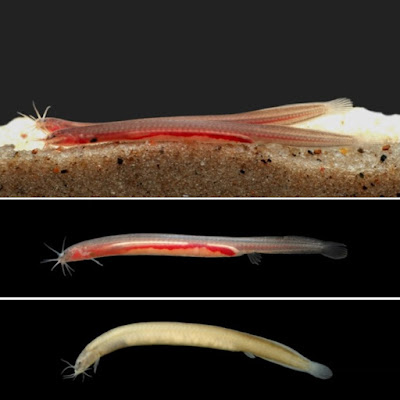[Most Recent Entries] [Calendar View]
Tuesday, October 8th, 2019
| Time | Event | ||||||
| 3:47a | [Entomology • 2019] Schistomitra joelmineti • First Record of the Genus Schistomitra Butler, 1881 (Lepidoptera, Epicopeiidae) from China, with the Description of A New Species
Abstract The epicopeiid moth genus Schistomitra Butler, 1881 is reported outside Japan for the first time, with a new species, Schistomitra joelmineti Huang & Wang, sp. nov., described from the southern part of Shaanxi and Gansu Province in China. Photographs of adults and genitalia are provided, and the distribution pattern of the genus is discussed. Keywords: East Asia, Geometroidea, host plant, oriental swallowtail moth, Stewartia, taxonomy
Schistomitra joelmineti Huang & Wang, sp. nov. Diagnosis: Schistomitra joelmineti sp. nov. is characterized and distinguished from S. funeralis (Figs 6–8, 15–17, 20) by the following characters: 1) the size is larger in both sexes, length of forewing 26–28 mm vs. 25–27 mm in males, 27–30 mm vs. 25 mm in females; 2) the forewing has the discoidal cell totally encircled by darkened veins, while the lower portion of discoidal cell remains pale yellow like its ground color in S. funeralis; 3) the blackish postmedian band on forewing upper side is narrower compared to the much wider band in S. funeralis; 4) the hind wing upper side has a much reduced blackish pattern in cell Rs and bases of cell 1A+2A and 3A, whereas the blackish pattern is better developed in all these cells in S. funeralis; 5) in the male genitalia the uncus is shorter with its tip nearly flat or slightly concave in the middle, while uncus is longer with its tip rounded in S. funeralis; 6) the sacculus is longer, and the apex of praesacculus forms a long, sharp, blade-like process pointing dorsally, while in S. funeralis the sacculus is shorter, with the apex only forming a short and rounded bulge; 7) the aedeagus is slightly thicker and longer, with the distal shaft more robust and the coecum larger, while the aedeagus is narrower and shorter, with distal shaft slenderer and coecum smaller in S. funeralis; 8) in the female genitalia, ductus bursae is more sclerotized, corpus bursae is smaller with a rounded signum, while in those of S. funeralis the ductus bursae is more membranous, the corpus bursae is larger, with the signum being elliptical. Distribution: Currently this species is restricted to the southern part of Shaanxi Province and Gansu Province. Etymology: The specific name joelmineti is named in honor of Prof. Joël Minet (Paris, France) who contributed greatly to the study of the family Epicopeiidae and kindly provided the first author with valuable literature when he began studying Epicopeiidae. Biology: This species is univoltine, occurring from late April to early June. Adults are usually found sucking nutrients and water on damp ground (Fig. 21) or resting on leaves (Fig. 22) near the edge of the forest (Fig. 23) at altitude between 800 to 1800 m. Si-Yao Huang, Yuan Zhang, Min Wang and Xiao-Ling Fan. 2019. First Record of the Genus Schistomitra Butler, 1881 (Lepidoptera, Epicopeiidae) from China, with the Description of A New Species. ZooKeys. 878: 145-155. DOI: 10.3897/zookeys.878.35364 | ||||||
| 9:39a | [Entomology • 2019] Glaphyrosoma stephanosoltis • A New Species of King Cricket Glaphyrosoma Brunner von Wattenwyl, 1888 (Orthoptera: Anostostomatidae: Glaphyrosomatini) from Costa Rica with Behavioral Observations
Abstract A new king cricket species Glaphyrosoma stephanosoltis sp. nov. (Orthoptera: Anostostomatidae: Glaphyrosomatini) from mid-elevation tropical rainforests of Costa Rica is described. This new species represents the southernmost distribution of the genus Glaphyrosoma Brunner von Wattenwyl, 1888, which is widely distributed throughout Mexico, Guatemala, and Honduras. Biology of the new species is briefly described. Keywords: Orthoptera, new species, feeding biology, Central America
Family Anostostomatidae Saussure, 1859 Tribe Glaphyrosomatini Rentz & Weissman, 1973 Glaphyrosoma Brunner von Wattenwyl, 1888 Glaphyrosoma stephanosoltis Richardson, Trimm, Paderes, Koehl, & Song, sp. nov. Etymology. From Latin “stephano” meaning crown and “soltis” referring to the Soltis Center for Research and Education, the type locality of the species. Therefore, stephanosoltis means “Crown of Soltis” referring to the first king cricket ever described at the facility. Steven Richardson, Travis Trimm, Randell Paredes and Jonathan Koehl. 2019. A New Species of King Cricket Glaphyrosoma Brunner von Wattenwyl, 1888 (Orthoptera: Anostostomatidae: Glaphyrosomatini) from Costa Rica with Behavioral Observations. Zootaxa. 4671(1); 93–104. DOI: 10.11646/zootaxa.4671.1.7 New king cricket species discovery in Costa Rica phys.org/news/2019-10-king-cricket-speci | ||||||
| 10:10a | [Herpetology • 2019] Oedura elegans, O. picta & O. lineata • Three New Velvet Geckos (Diplodactylidae: Oedura) from inland eastern Australia, and Redescription of Oedura monilis De Vis
Abstract Inland eastern Australia has a complex array of habitats, driven by variation in topography, geology and moisture. This broad region is relatively poorly surveyed compared to coastal eastern Australia and likely contains significant numbers of undescribed reptiles. Oedura monilis is found through much of this region but has been shrouded in taxonomic uncertainty since its original description. Here I assess variation across the range of ‘O. monilis’ and show that it consists of two species: a widespread species in the northern half of the range and a widespread species in the southern half of the range. These two species are readily diagnosed by colour pattern and aspects of shape and scalation. I show that the name O. monilis applies to the northern species. I also show that the name O. attenboroughi Wells & Wellington applies to the northern populations, making it a junior synonym of O. monilis. I describe the southern widespread species as Oedura elegans sp. nov.. I also describe two new, highly localised species from inland eastern Queensland that are allied to O. monilis: Oedura picta sp. nov. from a rocky range in the Moranbah–Dysart region, and Oedura lineata sp. nov. from brigalow forest remnants in the Arcadia Valley. These two species are distinct for colour pattern and aspects of size, shape and scalation. Oedura lineata sp. nov. has a very small and fragmented range, and is restricted to a highly threatened habitat type. It therefore warrants conservation attention. I also provide more detailed diagnoses for O. coggeri Bustard and O. tryoni De Vis, and demonstrate that the name O. ocellata Boulenger is a junior synonym of O. tryoni. Keywords: Chordata, Oedura monilis, Oedura elegans sp. nov., Oedura picta sp. nov., Oedura lineata sp. nov., Oedura attenboroughi, Oedura ocellata, Oedura tryoni, Oedura coggeri Oedura monilis De Vis, 1888 Ocellated velvet gecko Oedura elegans sp. nov. Elegant velvet gecko Etymology. From the Latin elegans, meaning elegant; in reference to the fine pattern and form of this species.
Oedura picta sp. nov. Ornate velvet gecko Etymology. From the Latin picta, meaning painted, in reference to the beautiful markings on this species.
Oedura lineata sp. nov. Arcadia velvet gecko Etymology. The species name lineata is derived from Latin and refers to the linearly-arranged white lines, spots and dark markings that characterise this species. Conrad J. Hoskin. 2019. Description of Three New Velvet Geckos (Diplodactylidae: Oedura) from inland eastern Australia, and Redescription of Oedura monilis De Vis. Zootaxa. 4683(2); 242–270. DOI: 10.11646/zootaxa.4683.2.4 | ||||||
| 10:24a | [Ichthyology • 2019] Pangio bhujia • A New, Peculiar Species of Miniature Subterranean Eel Loach (Teleostei: Cobitidae) Lacking Dorsal and Pelvic Fins from India
Abstract A unique, new species of eel loach, Pangio bhujia, is described from Kerala, India. It is the first species of Pangio to be described from subterranean waters. It possesses several unusual characters including absence of both dorsal and pelvic fins, the presence of only 3 pectoral-fin rays, 6 anal-fin rays and a unique count of 38 precaudal + 24 caudal vertebrae. Keywords: Pisces, aquifers, freshwater fishes, hypogean, Kerala, Western Ghats Pangio bhujia, new species Etymology. The species name bhujia was inspired by the resemblance of this species to the widely known Indian snack ‘Bhujia’, small noodle-like pieces, usually made of moth beans (Fabaceae: Vigna aconitifolia), besan and spices. V.K. Anoop, Ralf Britz, C.P. Arjun, Neelesh Dahanukar and Rajeev Raghavan. 2019. Pangio bhujia, A New, Peculiar Species of Miniature Subterranean Eel Loach Lacking Dorsal and Pelvic Fins from India (Teleostei: Cobitidae). Zootaxa. 4683(1); 144–150. DOI: 10.11646/zootaxa.4683.1.8 |
| << Previous Day |
2019/10/08 [Calendar] |
Next Day >> |
